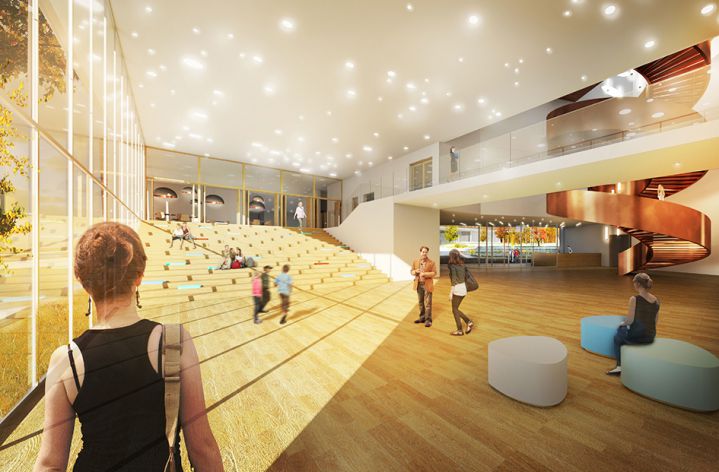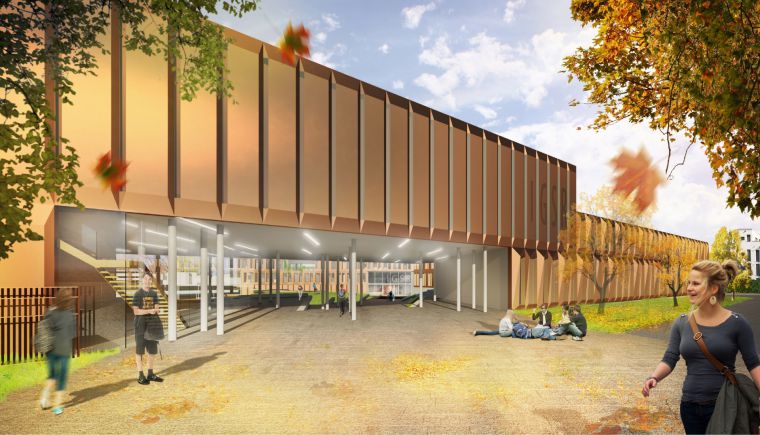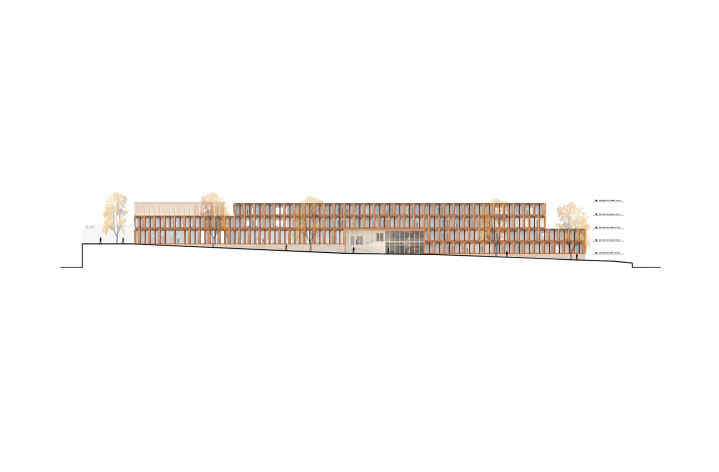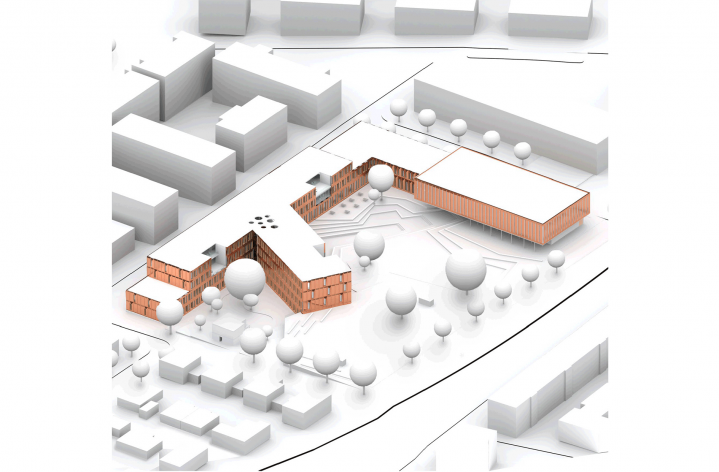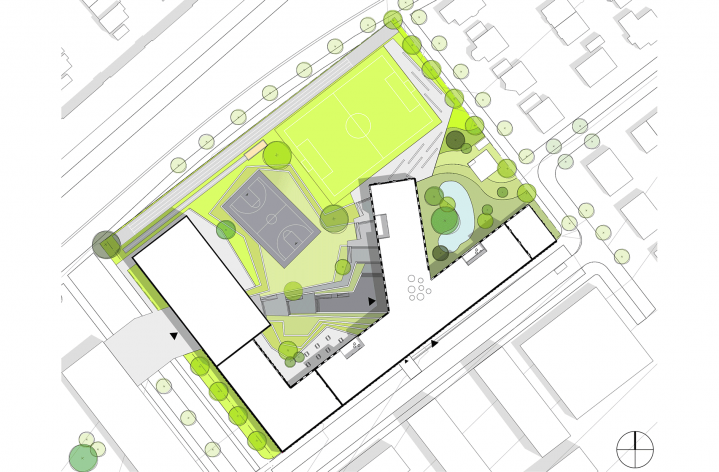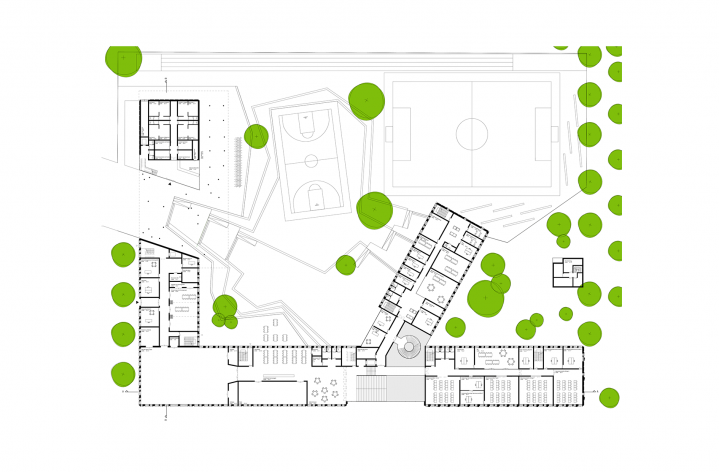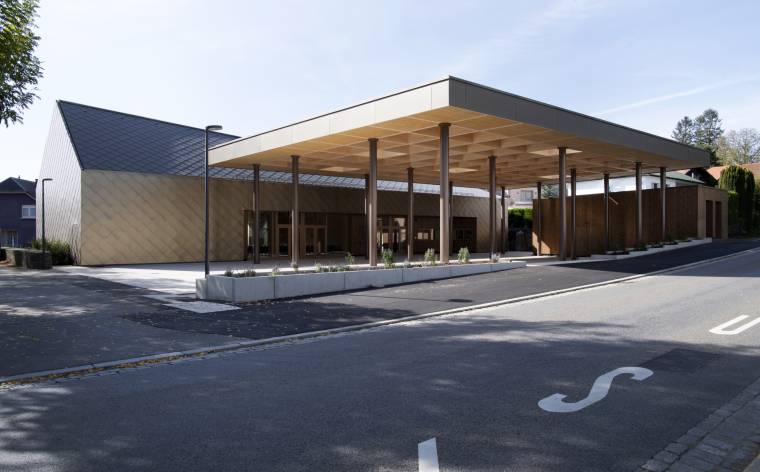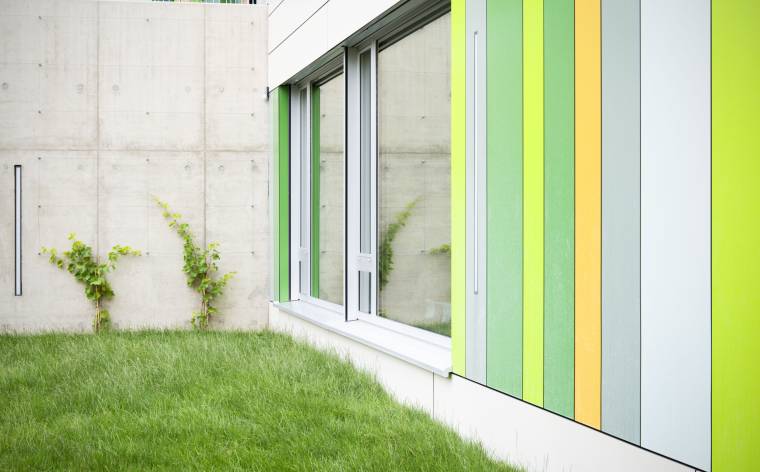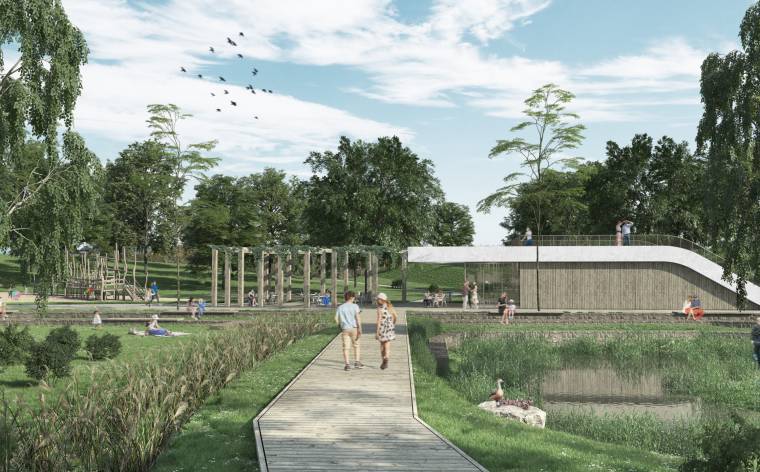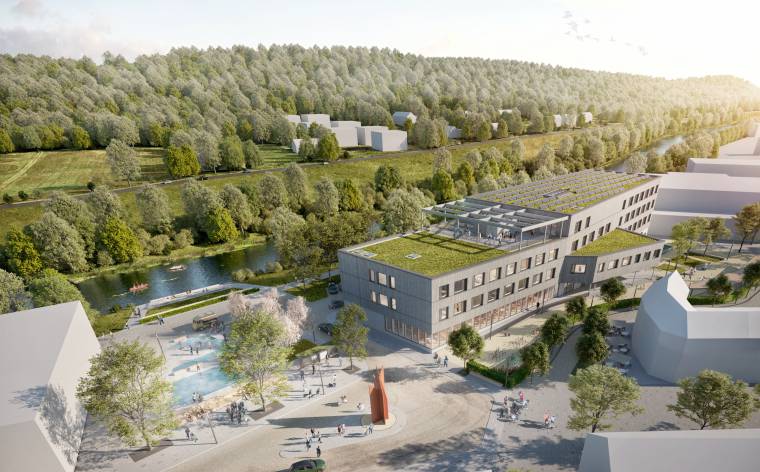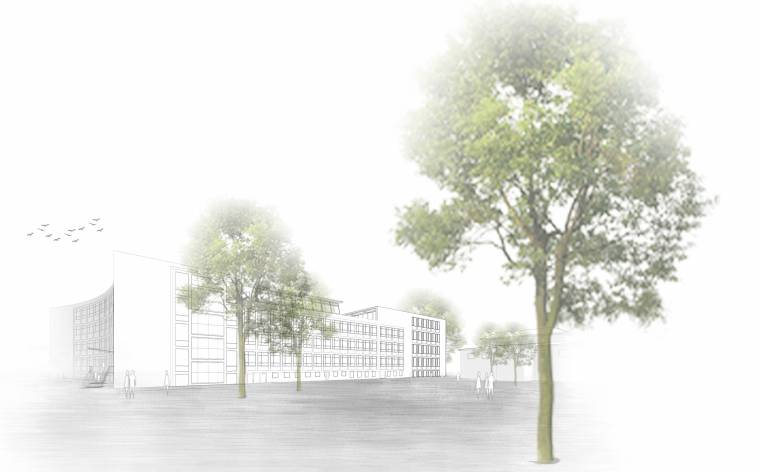Category :
Education + Research + Learning
Project :
New construction of an integrated comprehensive school am Riedberg
Client :
Stadt Frankfurt am Main
Country :
Germany
Area :
gfa 4.066 m²
Planning period :
2016
Award :
2nd prize
Share on
Project New construction of an integrated comprehensive school with 2-field sports hall at Riedberg in Frankfurt am Main, awarding authority City of Frankfurt am Main (GER) architecture services WW+, Esch-sur-Alzette (LUX) / Trier (GER) in cooperation with atelier PRO, Den Haag (NL) energy planning BouwNext, Ede (NL) GFA 4,066 m² UFA 2,905 m² GF 12,670 m³ total area 0,9 ha competition phase 07/2016 - 09/2016 award 2nd prize, VOF procedure with participation contest
Urban integration and architectonic design
Symbolic character in a residential area
The new Riedberg neighbourhood is home to an open morphological structure featuring houses and residential buildings in a continuous sequence of gardens and trees. The neighbourhood itself is in turn part of the extensive urban landscape around Frankfurt am Main. Important buildings in Riedberg have a larger building mass while residential buildings have their own size and their own format. The main urban planning for our building saw us decide on a main shape that articulates the roads on two sides of the plot of land and in doing so gives them a distinct profile. The result is a height-differentiated main shape, producing a protected interior area. This main shape is opened up at various points and thus extended.
The key public functions are located at street level between Gräfin-Dönhoff-Straße and the school courtyard. This includes the local support centre (BFZ) and the sports hall beyond the school gate. The sports hall is intended for use by the school as well as various sports clubs. The school’s auditorium and adjoining canteen are also located on Gräfin-Dönhoff-Straße. These can be used independently of the school and confer upon Gräfin-Dönhoff-Straße a pleasant, urban and lively character.
The format and the size of the building mass were adapted to the development located opposite the school by means of a robust wall on the short and long sections of Gräfin-Dönhoff-Straße and an open structure on the other two sides.
We chose this compact building mass for four reasons:
• urban articulation of the short and long sections of Gräfin-Dönhoff-Straße
• passive construction
• functional organisation of school
• phased and modular construction
Functionality / implementation of room programme
Room programme = schedule of requirements + location
The room programme is the functional counterpart of the schedule of requirements in the context of the urban landscape of the Riedberg neighbourhood. The general functions are located at street level and can be used independently of the school. The sports hall can be accessed from the road, but is located beyond the entrance gate. The support centre, the auditorium and the adjoining canteen of the school are located on the corner of Gräfin-Dönhoff-Straße.
The centre of the school
The entrance area forms the centre of the school, clearly visible and easily accessible via the entrance gate, the school courtyard and the long section of Gräfin-Dönhoff-Straße. Given the sloping nature of the site, the centre is half a storey lower. From the centre, a wide terraced staircase leads to the canteen and the auditorium. The offset level within the school thus follows the elevation upon which the school rests. In the centre, a generous, open, monumental and visually dominant staircase leads to the various teaching clusters on the upper floors. In the centre of the ground floor, two building parts accommodate the rooms for specialist lessons as well as the profile rooms, which can be used by all classes. The building part along the road houses the canteen and the auditorium, located above the underground car park. The first floor houses further rooms for specialist lessons as well as the school’s administration. The first and second floors are used by all pupils and can in part also be accessed by residents (auditorium, canteen). The second and third floors are more closed off. This is where the individual class clusters are located. The programme is organised in such a way that those functions requiring the highest level of tranquillity and comfort are located on the upper floors, away from the school’s lively focal point and break area.
Teaching buildings: identity and flexibility
The second and third floors accommodate six clusters. The second floor is where the media library is located, right in the centre, while the third floor houses pupil study rooms. Each grade level has its own cluster. A cluster literally means a “year house”. Each year, pupils move to a different house. These houses feature a uniform structure. They consist of four classrooms, one teaching staff room and a room for independent study. The hallway has been extended to allow for an additional room along the façade, in which pupils can study independently. The school’s setup is generally uniform. All tables and chairs are the same. The use of varying colours and different furniture (other than tables and chairs), however, bestows an own identity upon the individual houses. It is important that pupils and their teachers feel that the cluster is not an anonymous space, but that instead it becomes a personalised space. A space that is different and therefore unique for this particular year group. Flexibility: since the clusters are arranged in a star-shaped pattern to one another on two floors and within the building, the classrooms can easily be exchanged or assigned to a different cluster. This results in the creation of a very flexible building, ensuring an optimal use of the individual rooms.
Efficiency/sustainability
Energy-efficient construction with comfort and health in mind
Our school concept is based on the passive house standard with an increased requirement regarding the overall energy balance. The use of a PV installation reduces t
Contact us !
